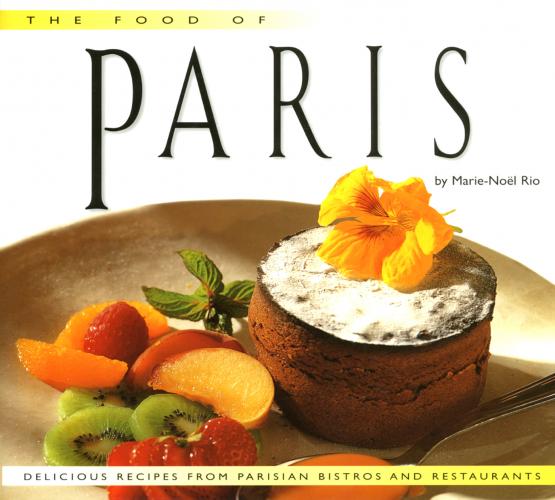It would be ungracious to forget, to the east of Burgundy, the wines from the Jura: Arbois, Côtes-du-Jura, and Château-Chalon, king of the vins jaunes or heady yellow wines, and the ever surprising Vin de paille, a rare sweet wine known as the wine for women who have just given birth Further south, the wines from the Savoy and Bugey are not well known, but some, like the seyssel, are nervous and distinctive.
In all French vineyards, the hardest takes place in the fall. Here, grapes ar& hand picked in the traditional way.
And above all, between Burgundy and Côtes-du-Rhône, the beloved Beaujolais, red or white, and its ten crus: Saint-Amour, Juliénas, Moulin-à-vent, Chénas, Fleurie, Chiroubles, Morgan, Régnié, Côte de Brouilly, and Brouilly. The names ring out like a lively dance at a Bastille Day ball.
The wine cellars of many producers are architectural wonders, like the Chartreux cellars in the Jura region, with its medieval vaulted ceilings, pictured here.
Champagne is probably the most famous wine-growing region in the world. Claims that Dom Pérignon, wine keeper at the Hautvilliers Abbey in the 18th century, invented the sparkling wine are not entirely accurate, for it existed empirically (it was talked about as early as Henri IV's time), but he developed the precise techniques that give the wine its unique characteristics. Champagne making is an art of blending and maintaining consistent taste. Only some of the production is vintage, and then only in the best years. The categories of brut, sec or demi-sec (extra dry to semi-sweet) depend on the amount of sugar compound added to ferment the wine and reduce acidity. Rose Champagne is obtained by adding a few drops of red wine to a white base, or by fermenting still rose wine. Many prestigious champagne houses have been sold to large industrial conglomerates, but some independent houses, which stake their business on quality, have managed to resist the powerful groups. The best known and most expensive champagnes are not always synonymous with excellence. Trust a specialist, and your own taste buds.
The Côtes-du-Rhône, from Vienne to Avignon, is the second French wine-growing region after Bordeaux. In the vicinity of Vienne excellent wines are produced, including the very old red Côte-Rôtie and the whites Condrieu and Château-Grillet. The region of Valence provides red and white Saint-Joseph and Comas, which can be of very high quality, the venerable hermitage and Crozes-Hermitage, and white Saint-Péray. Between Montélimar and Avignon, next to the heterogeneous productions from Côtes-du-Rhone, Côtes-du-Rhône-villages, and du-Ventoux, Costières-de-Nîmes or Coteaux-du-Tricastin, are found the justly renowned Châteauneuf-du-Pape, the lovely but less popular Gigondas, and Vacqueyras, delicious lirac in reds, whites, and rosés, and tavel, a charming rose. This too is where Muscat-de-Beaumes-de-Venise and Rasteau Rancio are produced, two sheer delights.
The vineyards of the Languedoc-Roussillon supply 40 percent of wine drunk in France. Quality, generally mediocre a century ago, has notably improved, especially among the reds.
In the South East, towards the Italian border, Provence offers along with a range of spicy whites and roses or delicious reds like Bandol, a highly irregular production that encompasses the best and the worst of wines. But with a little patience and curiosity, one can always find a few good bottles wherever one looks.
Finally, Corsica meets expectations with its reds that are high in tannin, its aromatic whites and fruity roses.
The Loire, from the Massif Central to the Atlantic, is fertile ground for vineyards. Pouilly-sur-Loire, Pouilly-Fumé, Sancerre (that good King Henri IV considered to be the finest wine in the kingdom), Menetou-Salon (enjoyed by Jacques Cœlir in the 15th century) Quincy, and Reuilly, available in whites, but also reds and roses. Along with the three colors of mass-produced Touraine, reds from Chinon, Bourgueil and Saint-Nicolas-de-Bourgueil, whites from Montlouis and Vouvray (the latter had its praises sung by Rabelais and Balzac), still, sparkling or sweet, shine over the Touraine region with legendary brilliance. The Saumurois and Anjou regions can be proud of the Saumur-Champigny, exquisite whites from Savènnieres, and the noble liquoreux, before making way for the Muscadet from the Pays Nantais of which the more highly prized is the Sèvre-et-Maine.
Wine is not supposed to quench thirst but to exalt a dish, making their marriage an unforgettable experience. Without wine, the best of meals will be lopsided. That is why each recipe here also includes a suggestion of a region or a cru that the chefs feel will make the best accompaniment. But there is no such thing as just one perfect match, since taste, however informed and cultivated, is a subjective, personal, intimate experience and for every recommendation, there are countless exceptions. Your own experiments will be your best guide. As a rule of thumb, there is little chance of going wrong by serving a dish and a wine from the same geographic region. An area's cuisine develops around its vineyards, kitchens, and wine cellars and it tries to strike a balance between the subtlety and the heartiness of a dish and the strength of a wine. Of all the virtues of the French, balance is the most desirable and the key to the art of gastronomy.
The owner of this wine shop spends as much energy preserving the traditional appearance of his business as he does defending small, quality wine producers.
Part Two: Cooking in Paris
Between high technology and plain old ingenuity
Конец ознакомительного фрагмента.
Текст предоставлен ООО «ЛитРес».
Прочитайте эту книгу целиком, купив полную легальную версию на ЛитРес.
Безопасно оплатить книгу можно банковской картой Visa, MasterCard, Maestro, со счета мобильного телефона, с платежного терминала, в салоне МТС или Связной, через PayPal, WebMoney, Яндекс.Деньги, QIWI Кошелек, бонусными картами или другим удобным Вам способом.
